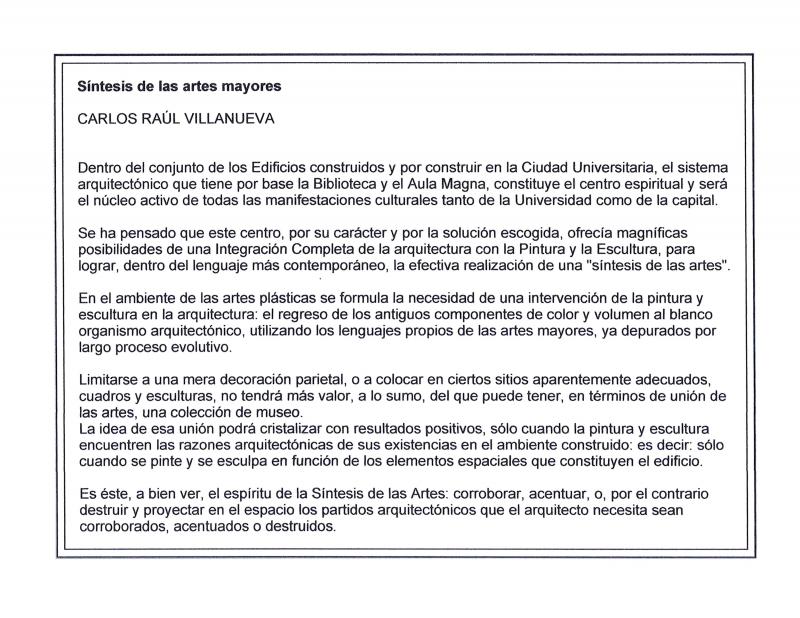This essay was first published in the magazine Hombre y Expresión in 1957; different versions were later published in the magazines Integral in 1958 and in Arquitectura, Espacio y Forma in 1960. The text was written as part of the speech that Carlos Raúl Villanueva (1900–75) delivered at the opening of the Aula Magna auditorium in the Ciudad Universitaria de Caracas (1952-53). The essay has great historical value; it is fundamental to understanding the author’s notion of “artistic integration” since it will be the base for other concepts essential to his work. Villanueva places emphasis on the social and human function of the arts, which can only be fulfilled by means of the true coexistence of different art forms. Furthermore, he asserts that the arts in general, but architecture, painting, and sculpture in particular, can only serve their true purpose when fully enmeshed in the social, collective, and human environment. Crucial to “artistic integration” is, Villanueva argues, the joining of purposes. The fewer the “gaps” between different forms of expression, the easier it is to reach visual synthesis. The ideas presented in this essay would run through Villanueva’s work. Indeed, he would elaborate on them in later essays on the “coexistence of the arts.” Because it is theoretical and conceptual in nature, the essay does not mention specific proposals for “visual synthesis.” It does, however, contain much of the social and collective thinking that Villanueva hoped to introduce into contemporary functional architecture and into the larger art world so that painting and sculpture may serve a social function and go beyond the impersonal walls of museums. This approach provides the painter-sculptor with a way to go beyond art’s personalist and individualistic tradition.
For an essay by architect Carlos Raúl Villanueva on the Ciudad Universitaria, especially its library and Aula Magna auditorium, see “Síntesis de las Artes Mayores” (ICAA digital archive doc. no. 1173816).

